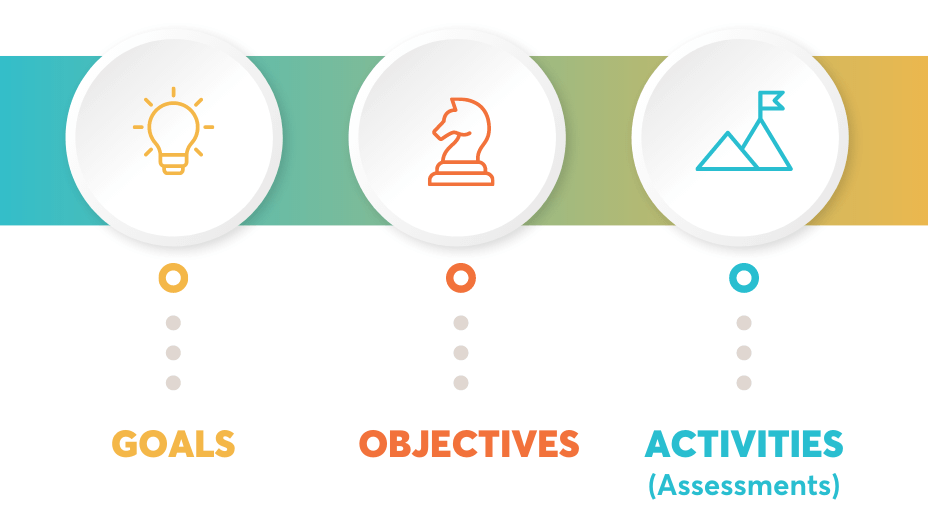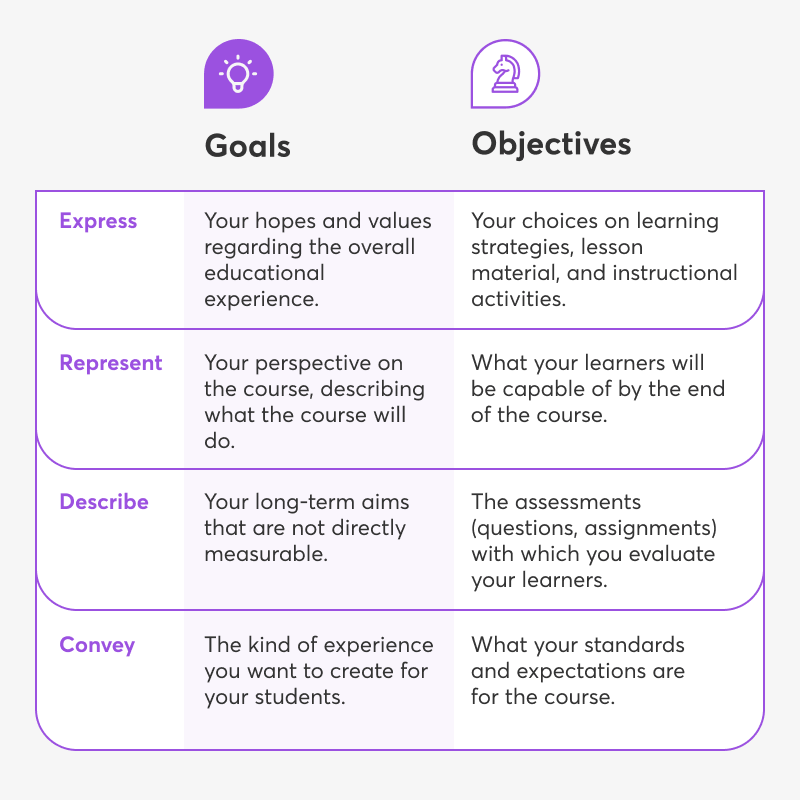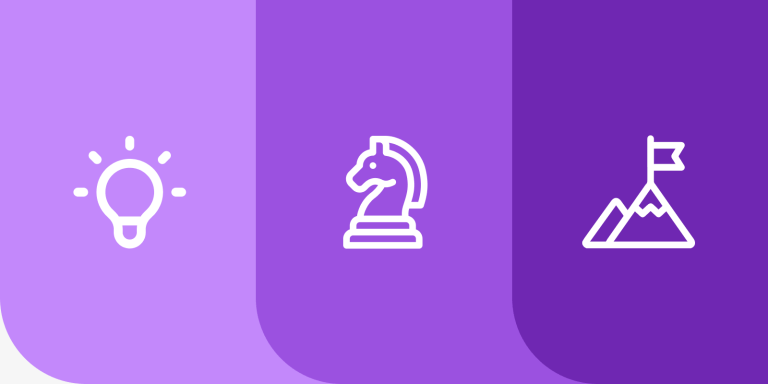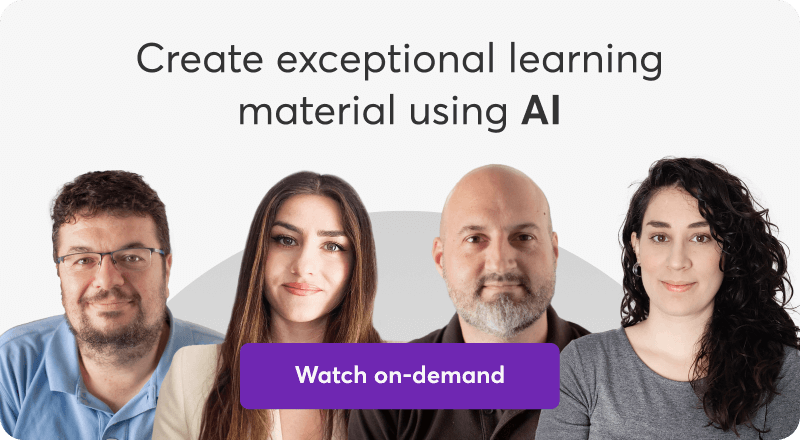Table of Contents
A great course that provides value to its learners is the dream of any course creator who wishes to make an impact, right? A combination of a validated course idea and a value-adding syllabus is a win-win situation for both course creators and their learners.
But what makes a course great? What are the elements that determine if a course adds the value a learner is looking for? Is it just the years of experience the instructor has about the teaching subject? The course idea per se? Or something more practical, like a clear definition of the learning goals and objectives that prepare the ground for an effective lesson plan of a course?
In this article, we are going to explore in-depth the role of Learning Goals and Objectives in course design and how to prepare a lesson plan based on them.
Table of contents
What are Learning Goals
Learning goals are broad, general statements of what we want our students to learn and provide:
Setting goals gives us a real road map to where we want to go. The same when we provide goals to learners. Learning goals are the heart of a course design and need to be made clear at the planning stage.
An instructor can use those goals as a roadmap to prepare an online class. In this article, we are going to explore in-depth the role of Learning Goals and Objectives in course design and how to prepare a lesson plan based on them.
What are Learning Objectives
The best way to use goals as a roadmap for a course design is to make them more clear and concise by determining specific learning objectives.
Writing learning objectives keeps you focused and helps you in planning. This is easily achieved with the use of action verbs that describe learner capabilities at the end of a course.
From the learners’ point of view, objectives help them understand what the instructor expects of them and what they must expect of themselves.
What is the Difference Between Goals and Objectives?
Many people confuse the definitions of goals and objectives and often confuse the terms.
Learning goals are long-term, broad, and achievable, but not necessarily measurable.
On the other hand, learning objectives are also referred to as learning outcomes because they are immediately linked to the expected outcomes; what we can expect learners to be able to do by the end of the course.
Learning objectives can then be broken down into small learning activities, or assessments.

Changing one of these three components greatly affects the other two. So, this process is dynamic while planning course content. The table below can help you understand how goals differ from objectives:
| Goals | Objectives | |
|---|---|---|
| Express | Your hopes and values regarding the overall educational experience. | Your choices on learning strategies, lesson material, and instructional activities. |
| Represent | Your perspective on the course, describing what the course will do. | What your learners will be capable of by the end of the course. |
| Describe | Your long-term aims that are not directly measurable. | The assessments (questions, assignments) with which you evaluate your learners. |
| Convey | The kind of experience you want to create for your students. | What your standards and expectations are for the course. |

Is it clear enough yet?
Now, let’s see a real example of an instructional goal vs. the objectives in an Art course and Photoshop course:
| Art Course | Photoshop course | |
|---|---|---|
| Learning Goal | Learners will know everything about art printing. | Learners will learn how to use Photoshop CS5. |
| Learning Objectives | Learners will be able to identify whether a print is a woodcut or a lithograph.
Learners will be able to justify this identification. |
Learners will be able to manipulate layers.
Learners will be able to correct colors. Learners will be able to paint. Learners will be able to create special effects. |
Why is it Important to Set Objectives?
When setting Learning Objectives:
Objectives tell the learner how they will be able to know, not merely guess, whether or not they have learned and understood the lesson.
How Should Objectives be Formed?
Objectives should be specific, concise, observable, and measurable. Each learning objective should target one particular aspect of student performance and be expressed with a single action verb.
There is a specific order according to which learners process information in a course. Bloom’s taxonomy helps understand this natural order. What Bloom did is describe the levels of student learning, that could help a designer set the right objectives:
Following this taxonomy is the most surefire way to boost learning to a higher level. The following table depicts everything we are talking about. In it there are examples of verbs and activities you can use to formulate your course objectives. Take a look!
| Domains | Sample Verbs for Writing Learning Objectives | Sample activities |
|---|---|---|
| Knowledge or Remembering | Recall, tell, show, match, list, label, define, cite, name, brainstorm | Test, worksheet, quiz, labeling, table |
| Comprehension | Compare, contrast, demonstrate, identify, report, outline, summarize, review, explain, catalog | Outline, summary, test, identifications, review, compare and contrast exercise |
| Application | Develop, organize, use, select, model, choose, construct, translate, experiment, illustrate | Report, diagram, graph, illustration, project, video, case study, journal |
| Analysis | Analyze, categorize, classify, distinguish, dissect, examine, differentiate, calculate, solve, arrange | Model, report, project, solution, debates, case-study solution |
| Synthesis | Combine, compose, solve, formulate, adapt, develop, create, validate, design | Article, report, essay, experiment, composition, essay audio or video product, drawing, graph, design |
| Evaluation | Assess, evaluate, determine, measure, select, defend, score, rank, discriminate, judge, justify, conclude, recommend | Peer and self-evaluations, charts, critique |
Examples of how to use the listed verbs:
(Application stage)
(Analysis stage)
(Evaluation stage)
See how it goes? You may struggle at first to apply this method, but it provides an analytical design, worthwhile to try out!
You will see how much more your learners will engage in your course.
While designing your objectives, it is optimal to follow Bloom’s hierarchical order of objectives and not dismiss lower levels as unworthy so that learners have all the requirements regarding previous knowledge to proceed.
Important tips:
Designing Your Course Using Learning Objectives
Let’s suppose you have chosen your topic and you are determined about what to teach in your course. When in the process of completing these steps, it is optimal either to use a pen and paper or a concept map application to create connections between your ideas.
1 Imagine your course
Brainstorm a list of all the possible things you want to teach and might include in your course.
2 Draft your course goals
Write at least 2-3 goals to shape your ongoing course design. Here, we give you some questions that will help you plan your course goals:
“In this course, I will emphasize in…”
“The main themes learners will go through are…”
“The big picture I want to promote through this course is…”
Suitable verbs to use to set goals are shown below. “Through this course, you will…”
✔️ Know
✔️ Enjoy
✔️ Understand
✔️ Appreciate
✔️ Grasp the significance of
3 Design Learning Objectives
Using the table above, design your Learning Objectives. Break down your goals to form more specific and measurable learning objectives. Link those objectives to the corresponding sections.
4 Write the Activities
For each objective of the course, write down some corresponding activities that you are planning to use to accomplish that objective. Through these activities, students will achieve the objectives you set for them. Other activities not mentioned above are:
5 Develop Assessments
Ideally, as you are drafting course goals and learning objectives, you are also beginning to develop the assessments for the course. Decide which questions you will include in your questionnaires or exams (as well as the type of questions you will use) or the content of your assignments based on the objectives you have set.
Align your assessment activities with your objectives. This way you can be sure that your learners have the desired progress.
6 Reflect
Reflect on your objectives and consider the following:
What if I Have Already Created My Course?
You may argue with the above if you have already created your course without having formed clear goals and objectives. But imagine how much you could improve your material by reviewing what you want to achieve and also how happy your old or new learners will be if you add this information to your course.
How to update a course using learning goals and objectives:
Then, you can create a great lesson plan based on the learning objectives, goals, and activities you have decided on.
Further Reading
To prepare quality educational materials using learning goals, objectives and outcomes is a challenge worth pursuing. It will translate into a higher valued course, an optimized level of learning, satisfied students, and will help you in the process of creating your own course.
For this purpose, we suggest the following literature for further studying:
📑 Learning outcomes and instructional objectives: Is there a difference?
📑 Choosing teaching methods based on learning objectives: An integrative framework
📑 Bloom’s taxonomy revisited: Specifying assessable learning objectives in computer science
✨ Supercharge Your Course Creation with AI!
Want to create exceptional learning experiences faster and smarter? Discover how you can harness the power of AI in instructional design. Watch our on-demand webinar to learn tips, tricks, and best practices from industry experts.
Further reading you might find interesting:
Rosemary is LearnWorlds’ Content Marketing Manager. She has over 2 decades of experience in omnichannel marketing and content writing for the IT and SaaS industry. Her expertise lies in crafting effective content marketing strategies that attract, engage, and nurture customers, enabling LearnWorlds to reach its target audiences with precision.



